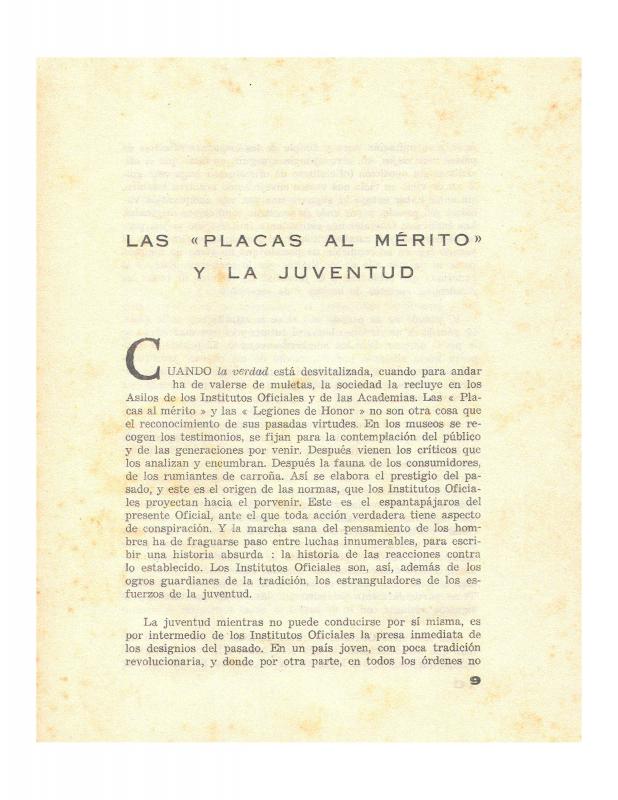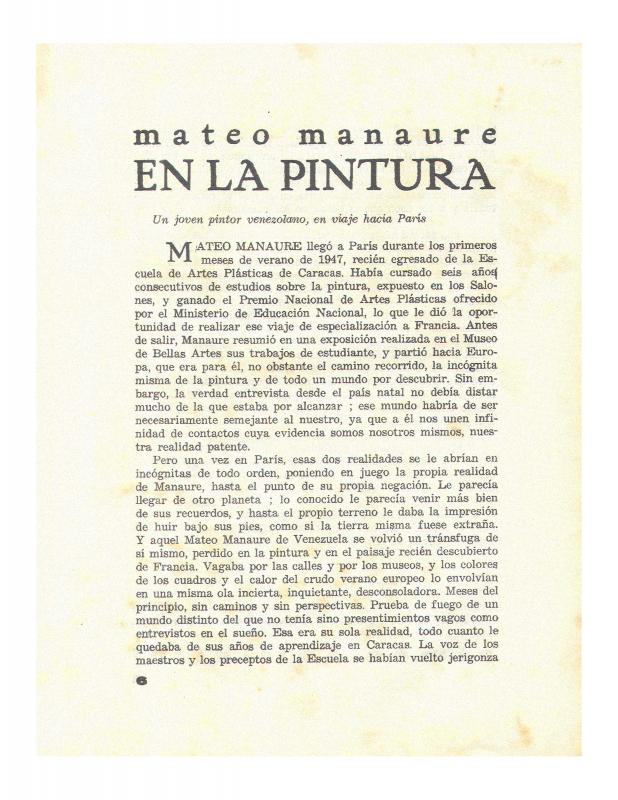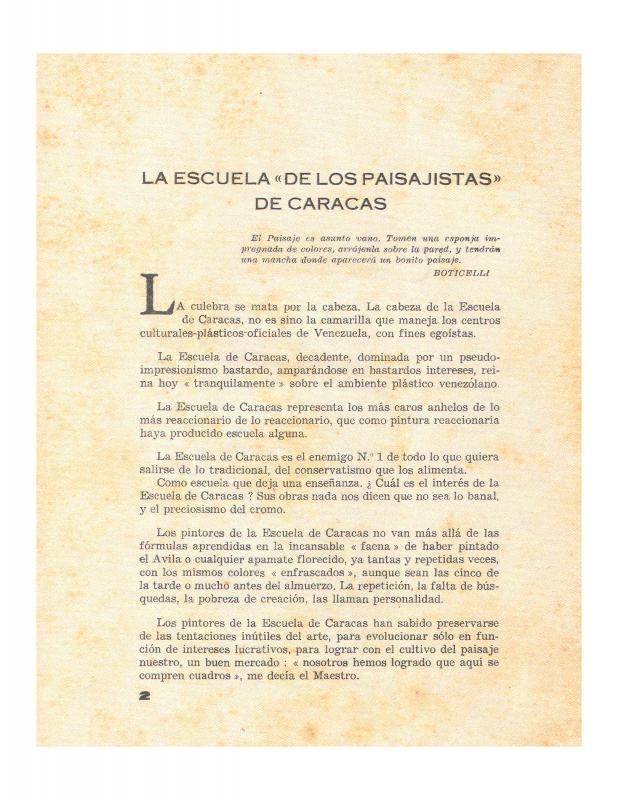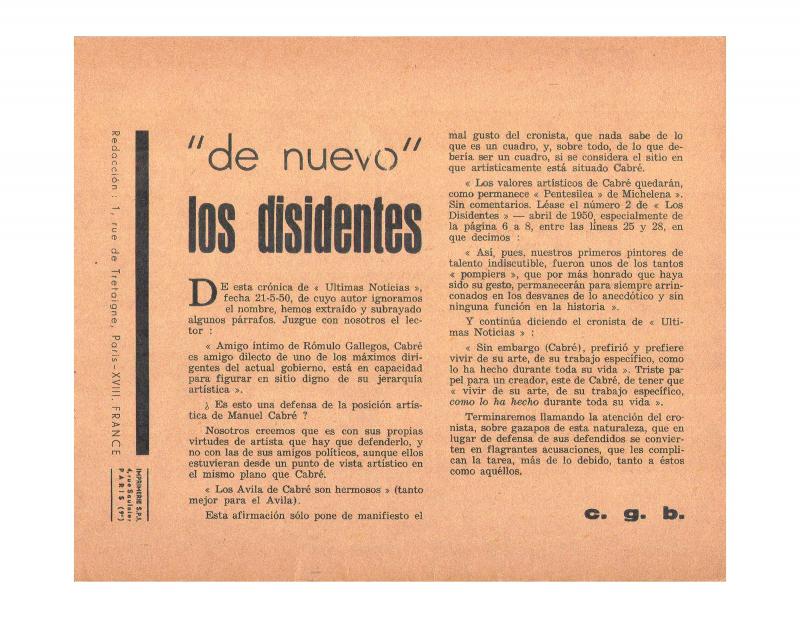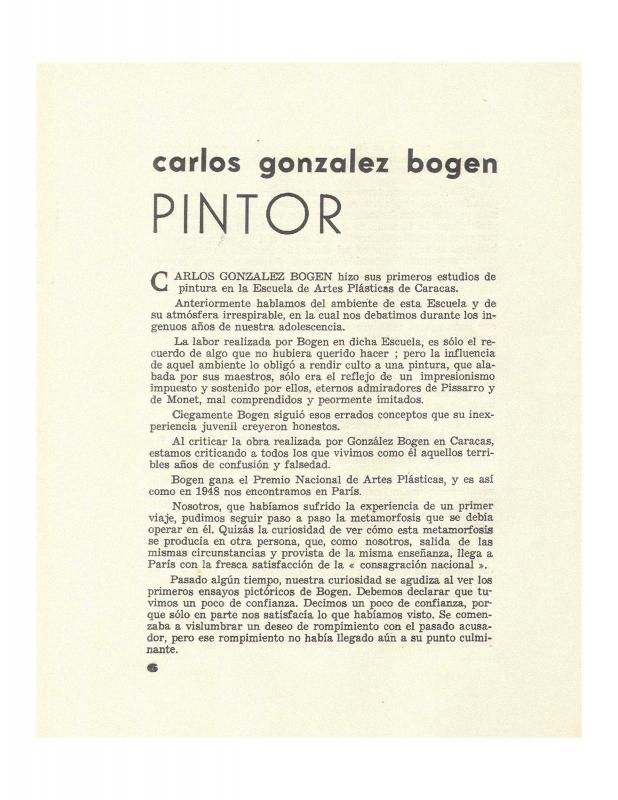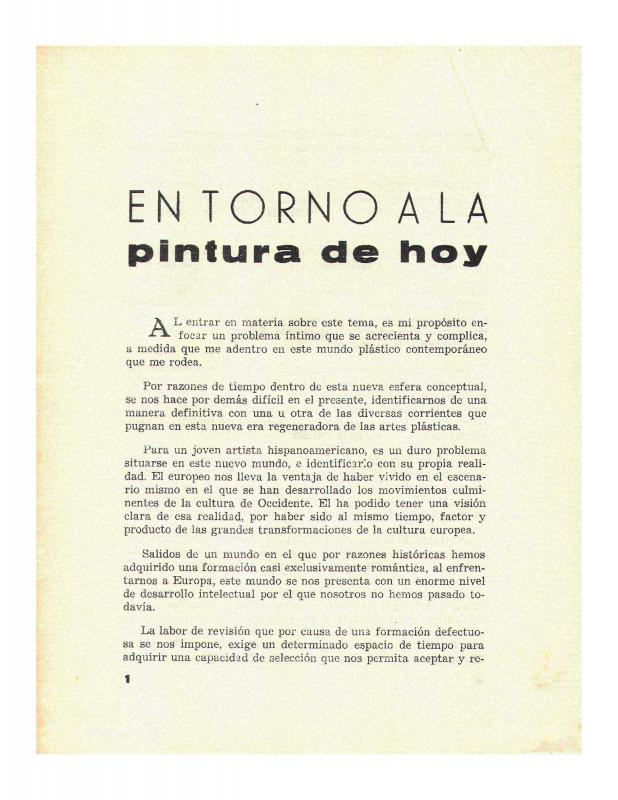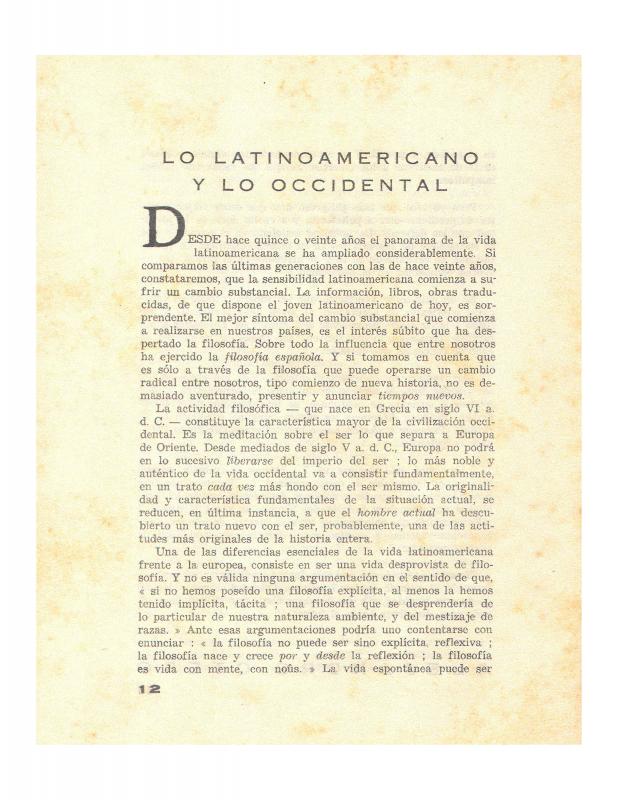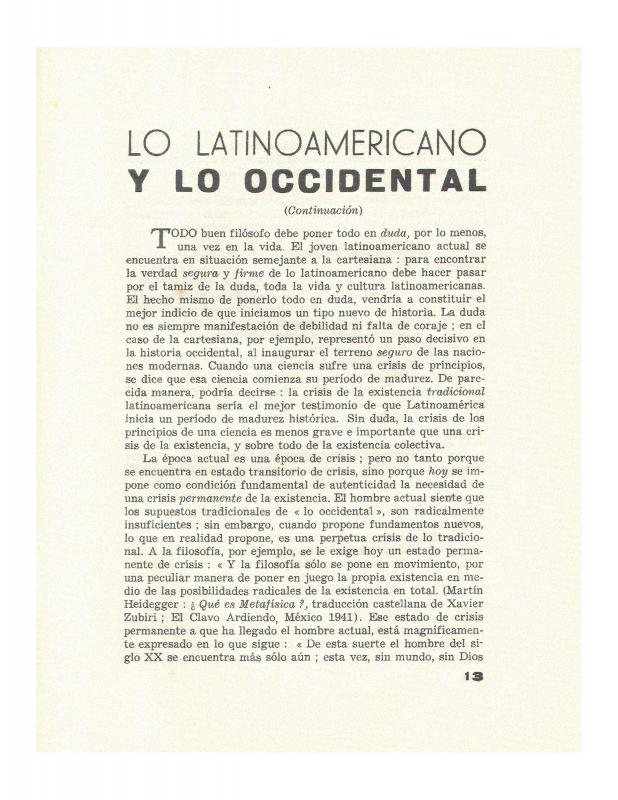In this third issue of Los Disidentes magazine, the authors anticipate the arguments that could be used against them: “individualists, universalists, bourgeois.” It would not be long before they would be endorsed with such epithets in Venezuelan culture, which leads one to suppose — that by this third issue— rumors had arrived in Paris regarding the impact they had caused in Venezuela. Similar arguments were used in 1949 to attack Alejandro Otero following the exhibition of his series Las Cafeteras [The Coffee Pots] at the Museo de Bellas in Caracas, which caused great controversy. It should be noted that the publication describes not only the Venezuelan “tradition” as “poor,” but also the Latin American tradition; afterward nationalist voices of various generations in Venezuela surfaced to oppose them. Such controversies arose because of the desire (intentional on the part of Los Disidentes] to shake the foundations of tradition with the very methods that had been used by it: “violence” according to this publication. Each one of the issues of the magazine (the exception being no. 4), contains the principles, direction, and strategies of the movement, which together constitute their fragmentary “manifesto.”
The cover of this third issue lists the then-active members of Los Disidentes: painters
Pascual Navarro, Alejandro Otero, Mateo Manaure, Luis Guevara Moreno, Carlos González Bogen, Narciso Debourg, Perán Erminy, Rubén Núñez, Dora Hersen, Aimée Battisitini, as well as ballerina Belén Núñez, then-philosophy student J.R. Guillent Pérez, filmmaker César Enríquez, poet Rafael Zapata, journalist Bernardo Chataing and ceramic artista Miguel Arroyo. The young painters Armando Barrios, Oswaldo Vigas, Alirio Oramas, Luis E. Chávez and Régulo Pérez are also included.
Los Disidentes was a group created in Paris in 1950, by Venezuelan artists and writers who lived in the city between 1945 and 1952. From the French capital, they fought against the official education imparted by the Escuela de Artes Plásticas of Caracas, whose foundations were in landscape and nativism. Doing honor to their name, Los Disidentes sought to ensure a renewal of traditional and academic art through the assimilation of the tenets of European abstraction. Among its members were the painters: Alejandro Otero (1921–90), Mateo Manaure, Pascual Navarro, Luis Guevara Moreno, Carlos González Bogen, Narciso Debourg, Perán Erminy, Rubén Núñez, Dora Hersen, Aimée Battistini, as well as philosophy student, J. R. Guillent Pérez. These were later joined by other national artists (Armando Barrios, Miguel Arroyo, Oswaldo Vigas, Omar Carreño, Alirio Oramas and Régulo Pérez). The group published an eponymous magazine, Los Disidentes, which produced five issues, and served as the chief outlet for their ideas. [For other texts on this group, see the following documents in the ICAA digital archive: by Otero, “Del arte abstracto” (doc. no. 813611), (“Las "placas al mérito" y la juventud” (doc. no 813429) and (“Mateo Manaure en la pintura : Un joven pintor venezolano, en viaje hacia París” (doc. no. 813639); by González Bogen (“La escuela "de los paisajistas" de Caracas” (doc. no. 813695 and “"De nuevo" Los Disidentes” (doc. no. 813667); by Manaure (“Carlos González Bogen: Pintor” doc. no. 813583); by Debourg (“En torno a la pintura de hoy” (doc. no. 813597); and by Guillent Pérez both “Lo latinoamericano y lo occidental [Parte I]” (doc. no. 813723 and “Lo latinoamericano y lo occidental: (Continuación)” (doc. no. 813478)].


